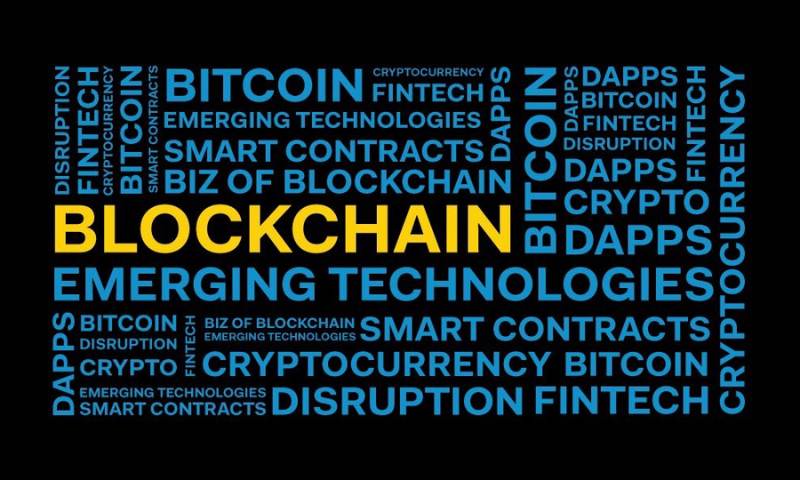How Secure is Blockchain? Unraveling the Myths of Digital Safety
You’ve heard the buzz about blockchain—it’s everywhere. But among all the noise, one question keeps popping up: How secure is blockchain? Let’s dive in. We’ll start by slicing through the tech jargon to show you how the cryptography underpinning the blockchain is a digital Fort Knox. Next, we’ll explore why the blockchain’s design is like a well-guarded hive, with safety in numbers. And then, we don’t shy away from the dark side; we tackle the real threats trying to bust these digital vaults wide open. Finally, I give you the lowdown on how to beef up the blockchain, keeping it tough against tomorrow’s heists. This isn’t just another tech talk—this is your demystified guide to the reality of blockchain’s armor.
The Bedrock of Blockchain Security: Cryptography and Its Role
Public Key Cryptography and Cryptocurrency Encryption
You store your digital cash in a virtual wallet, right? Think of public key cryptography like the safest lock you’ve ever used. No one can open it without the right key. But don’t worry, you’re the only one holding that key! It’s the magic trick blockchain uses to keep your money safe. Each time you get or send money, this lock-and-key game happens without you even knowing. It’s like a secret handshake between your cash and where it’s going.
Cryptography turns your private info into a puzzle. Only the person with the right key can solve it. It’s not just any puzzle, but one that would take the world’s fastest computer millions of years to figure out. Pretty safe, right? This is how your cryptocurrency keeps prying eyes away and makes sure only you can touch your digital dough.
Hash Function Integrity and the Impenetrability of Ledger Data
Now, picture your favorite detective game where you connect the dots. Blockchain does something similar with your transactions using something called a hash function. Every transaction gets its unique puzzle. Then, they get linked together in a chain. When they’re all mixed up like this, your info isn’t going anywhere it shouldn’t. It’s like a security guard that doesn’t sleep, always watching your transactions. This wall of puzzles keeps your stuff locked up tight from crooks.
Every piece of data locked in a blockchain gets a unique fingerprint, called a hash. If someone tries to mess with the info, the hash fingerprint changes. That’s a giveaway that someone tried to break in. Everyone would see that something fishy is up. So, it’s almost impossible to change your data without it lighting up like a Christmas tree on a dark winter night.
Remember your secret handshake from earlier? Each transaction makes a special handshake, too. And unless everyone at the party agrees, no deal goes through. So, even the world’s biggest wise guy can’t trick the system. It’s like when your entire family has to agree on what to watch for movie night.
That’s the nutshell on how blockchain locks down your transactions to keep your virtual money in the safe. It’s a fortress with the best guards—public key cryptography and hash functions—sling at the gates. No matter where you are, sending or receiving money, you’re covered by this bulletproof vest for your wallet. This is what keeps folks trusting blockchain; because when it comes to keeping your treasures tucked away, blockchain is like the superhero of the digital world.
Decentralization: The Guardian of Distributed Ledger Safety
Decentralization and Security: A Symbiotic Relationship
In the world of blockchain, safety is serious business. And at the heart of this safety lies a concept called decentralization. It means spreading out control across a network of computers. This setup keeps our digital coins and data safer than in one big, easy-to-attack spot. Decentralization and security work hand in hand, like best friends. They make sure no single player holds all the power in blockchain networks. This fits well with the core idea behind blockchain technology. It’s all about getting rid of the middleman and giving control back to the people!
Ledger Tamper Resistance and Consensus Mechanisms Reliability
Now, let’s talk about keeping the bad guys out. Blockchains use a clever trick called ledger tamper resistance. Imagine writing in a notebook that won’t let you erase anything. That’s pretty much how blockchain works. Once data is in there, changing it is next to impossible. This is great for stopping cheaters who want to mess with our transactions.
The secret sauce to this is something called consensus mechanisms. These are rules that all computers, or nodes, in a blockchain must agree on to add new info. They check and double-check every bit of data. This teamwork makes sure what goes into the ledger is the real deal. It’s like a bunch of friends promising to keep a secret. No one can spill the beans unless everyone agrees.
So that’s the lowdown on how blockchain stays secure. Decentralization spreads out the risk, and ledger tamper resistance plus consensus rules keep our transactions safe and sound. It’s smart, it’s tough, and it’s why we can trust blockchain to look after our digital stuff.
Threats to the Blockchain Ecosystem and Defense Mechanisms
Understanding and Preventing 51% Attacks
Picture a group of miners in the blockchain world. They work to approve transactions and create new blocks. Now imagine if one miner or group got more than half the power. They could control things. That’s a 51% attack. They could stop new transactions, reverse transactions, and double-spend coins. But pulling this off? That’s tough. You need a lot of computer power and money. And even then, it’s not stealthy; people would notice.
So, how do we stop this? Diverse mining pools help. More miners mean attack risks drop. Networks grow strong and harder to hit. We keep watch on the miners’ power. If one gets too strong, we call foul. We spread out the power, making sure no one has too much.
Evaluating Node Security in Blockchain Networks and Consensus Vulnerabilities
Nodes are the watchers of the blockchain. They keep an eye on every block and transaction. But nodes can be weak spots. Hackers look for soft spots in these defenders. Consensus is how nodes agree on what’s true in the blockchain. But each consensus method has weak points.
Proof of Work (Pow) makes miners solve puzzles to add a block. It costs them time and power. Cheating here is costly. But Proof of Stake (PoS) says the more coins you have, the more power you get to add blocks. But what if you got lots of coins? You could mess with the truth.
So, nodes in PoW must stay tough against attacks. In PoS, we make sure no one’s too rich to rule the truth. We keep our nodes safe and watch how they talk to each other.
Blockchains are strong. But they’re not magic. We work to keep them safe. We watch for 51% attacks and keep our nodes strong. Then, we can trust the blockchain. Trust in tech, trust in team, trust in code. That’s how we keep our digital coins safe.
Enhancing Blockchain Robustness: Best Practices and Future-Proofing
The Implementation of Multi-Signature Protection and Access Controls
How can blockchain be made more secure? One key method is through multi-signature protection. This means you need more than one key to agree before a transaction can happen. It’s like having a safe that needs two people to unlock it at the same time. This stops a single person from causing harm if they turn bad.
Multi-signature means stronger control over who can access the blockchain. It lets you split the power between several people. Imagine a group that guards a treasure. Only together can they open the chest. This greatly reduces the risk of theft or loss.
Setting up access controls is another important security step. It’s vital in protecting our digital assets. Think of it as a security guard deciding who gets in and who stays out. Only those who should be there get in.
Combined, these methods make the blockchain a tough fortress to break into. They are best practices that help keep the network safe from attacks. It’s a bit like adding more locks to your doors.
Embracing Blockchain Security Best Practices in an Era of Emerging Threats
The world of blockchain tech moves fast. New threats pop up often. To stay safe, we must always be on our toes. Imagine playing a game where the rules constantly change. You must adapt quickly to win.
Following best practices in blockchain security is a must. It means doing regular checks and staying alert. You have to make sure you’re following the latest safety steps.
There’s a growing list of things to do to keep safe. Keep software up-to-date. Watch out for signs of hacking. Teach people how to use blockchain safely. Think of it as training everyone to spot funny money.
Another big part of this is knowing the risks of smart contracts and how they can be used wrongly. These are like contracts that run by themselves. But if they’re not set up right, they can cause big problems. It’s crucial to check them over and over to make sure they work as they should.
As we move forward, security must be the top thing on our minds. It’s all about creating a safe space for everyone to use blockchain. It should be as safe as crossing the street with the right lights and signs.
In short, by using multi-signature protection and access controls, we build a safer blockchain world. We can’t stop every problem, but we can make it hard for bad things to happen. Keeping up with best practices is our shield in this digital age. It’s our duty to make sure the world of blockchain remains a safe place to play and work.
In this post, we walked through the solid security that cryptography brings to blockchain. We saw how public keys keep our cryptocurrency safe and how hash functions make data in the ledger rock solid. We learned why the blockchain grid doesn’t have just one boss and how this protects the whole system.
We looked at the dangers out there, like the 51% attack, and how smart folks keep our nodes safe. Then, we tackled the smart moves we can make to keep the blockchain tough against future threats. This includes using more than one signature for extra safety and sticking to the best security steps.
So, when we use blockchain, we’re using a system that’s built tough, made safer with our good choices, and ready for what’s next. Let’s keep our blockchain strong and smart, step by step. This is our digital armor, and we’re the crafty blacksmiths shaping it for a safer tomorrow.
Q&A :
How does blockchain technology ensure security?
Blockchain technology enhances security through its inherent structure which is based on distributed ledger technology. Each transaction is encrypted and linked to the previous transaction, creating a chain of blocks that is very difficult to alter. Plus, the decentralized nature of blockchain means that no single entity has control over the entire chain, making tampering or hacking attempts much more challenging.
What are the security risks associated with blockchain?
Although blockchain is considered highly secure, it is not entirely free from risks. Security concerns such as 51% attacks, where an individual or group acquires control of the majority of the network’s mining power, can potentially arise. Additionally, vulnerabilities within smart contracts and the potential for key management issues can present security challenges.
Can blockchain be hacked or tampered with?
Hacking a blockchain is extremely difficult and highly unlikely due to the complexity of the technology and the cryptographic principles it employs. Each block is securely linked to the one before it, and any modification to a block would require alterations to all subsequent blocks, which must be accepted by the network consensus. Nevertheless, it is theoretically possible, especially if a bad actor gains control over a large part of the network.
How does blockchain privacy differ from security?
Blockchain privacy and security, while related, address different concerns. Privacy in blockchain refers to the ability to keep transaction details and the identities of parties confidential. Security, on the other hand, is about protecting the integrity of the blockchain and ensuring that the data within it is safe from unauthorized access or modifications.
What makes blockchain more secure than traditional databases?
Blockchain boasts a higher level of security compared to traditional databases due to its structure and consensus mechanisms. In blockchain, data is stored across a distributed network of nodes, meaning there is no single point of failure. Additionally, the consensus mechanisms required for transactions to be validated and recorded on the blockchain dissuade fraudulent activities and ensure all participants agree to the network’s maintained records.


